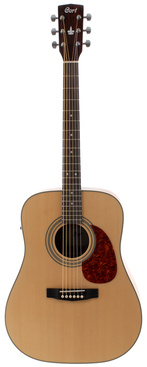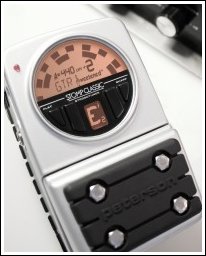That'll Never Happen Guitar Lesson - Blind Blake
How To Tune A Guitar - Is There More Than One Way To Tune A guitar?
 How to tune the guitar is probably one of the most important things we need to know and should be mastered before learning how to make guitar music.
How to tune the guitar is probably one of the most important things we need to know and should be mastered before learning how to make guitar music. This may be very frustrating. Even after careful tuning each string, we sometimes find that the sound isn't quite right - sometimes the guitar can sound decidedly horrible! What's more, we can hear that the strings seem in tune for one chord, but not for some others.
If you play blues guitar, for example, it's normally necessary to re-tune a little when wanting to play something in another style or key.
If you play blues guitar, for example, it's normally necessary to re-tune a little when wanting to play something in another style or key.
If you want to learn how to play blues guitar, country or folk, everything sounds a lot better if the guitar is tuned properly. I'll go through the basic way of rapidly tuning the guitar.
It should be said that if you can use a electronic guitar tuner, it's probably the best option even for basic guitar tuning. However, many inexpensive tuners are only accurate to about one percent. This may not seem a lot, but if two strings side by side are each out of tune by one percent in opposite directions, it's pretty evident.
First of all, the low E string is tuned to a standard source - a pitch pipe or piano - for example. Hold down the bass E string on the 5th fret and tune the next string (A) until it sounds the same.
Press down the A string at the fifth fret and tune the adjacent string (D) until it sounds identical.
Fret the next string (D) and tune the G string until it sounds the same.
Hold the G string down at the fourth fret and tune the next string (B) until the sound is identical.
Finally, fret the B string on the fifth fret and adjust the high E until it sounds the same. Play a few chords and re-tune, if necessary.
Most guitarists employ this method, as its easy. Normally, during a performance, I may adjust certain strings depending on the chords I used for a specific song.
Using One String As The Reference For All The Other Strings-An Accurate Alternative
Basic guitar tuning method
It depends how good your hearing is, but the big problem when using the basic method of tuning is that the next guitar string is tuned to the one before, which means that any error is transferred and more often than not made worse across the strings.
First of all, the low E string is tuned to a standard source - a pitch pipe or piano - for example. Hold down the bass E string on the 5th fret and tune the next string (A) until it sounds the same.
Press down the A string at the fifth fret and tune the adjacent string (D) until it sounds identical.
Fret the next string (D) and tune the G string until it sounds the same.
Hold the G string down at the fourth fret and tune the next string (B) until the sound is identical.
Finally, fret the B string on the fifth fret and adjust the high E until it sounds the same. Play a few chords and re-tune, if necessary.
Most guitarists employ this method, as its easy. Normally, during a performance, I may adjust certain strings depending on the chords I used for a specific song.
Using One String As The Reference For All The Other Strings-An Accurate Alternative
THE BEST WAY TO TUNE YOUR GUITAR
We can greatly reduce tuning errors associated with the first quick method by tuning the guitar strings to just one string. This method has the bass E for a reference, fretted at different points and additionally using harmonics to achieve the result. Where harmonics are used, the notes produced by two strings are compared between octaves - you will understand this better as you go through the process that follows.The bass E guitar string is tuned to a known source, just like we did for the first method, and then the A string is regulated with the low E string fretted at the fifth. This is exactly the same as the previous method we tried.
Press the E string down on the tenth fret and adjust the D string so that it sounds identical.
Fret the bass E string again on the third fret and tune the G string until it sounds like the same note, but AN OCTAVE above. This is much simpler than it appears.
Tune the next string (B) by holding down the seventh fret of the bass E, then tuning the B string until you hear the same note, but again, one octave above.
To finish off, fret the bass E at the twelfth to tune the high E. These last notes need to sound sound exactly the same.
TUNING A GUITAR WITH A TUNER
 Strum one or two chords and make any adjustments, if necessary. With a little practice, this method is more accurate than the basic method we all know, and doesn't take much longer to carry out.
Strum one or two chords and make any adjustments, if necessary. With a little practice, this method is more accurate than the basic method we all know, and doesn't take much longer to carry out. Although professionals use these two ways of tuning for speed during performances, it isn't easy in noisy places. Also, some performances need perfect tuning, such as when recording, for example.
In that, I prefer a strobe tuner, which are usually calibrated to be accurate to 1%. By contrast, an inexpensive electronic guitar tuner is accurate to around one percent.
Jim Bruce is a working blues man making a living playing blues guitar and teaching guitar students how to play the blues. His acoustic guitar lessons are fast becoming the standard to reach for acoustic blues guitar picking. Main website: http://www.play-blues-guitar.eu
Jim Bruce is a working blues man making a living playing blues guitar and teaching guitar students how to play the blues. His acoustic guitar lessons are fast becoming the standard to reach for acoustic blues guitar picking. Main website: http://www.play-blues-guitar.eu
Author: Jim Bruce
Date: 2015-05-09
Category: Music
